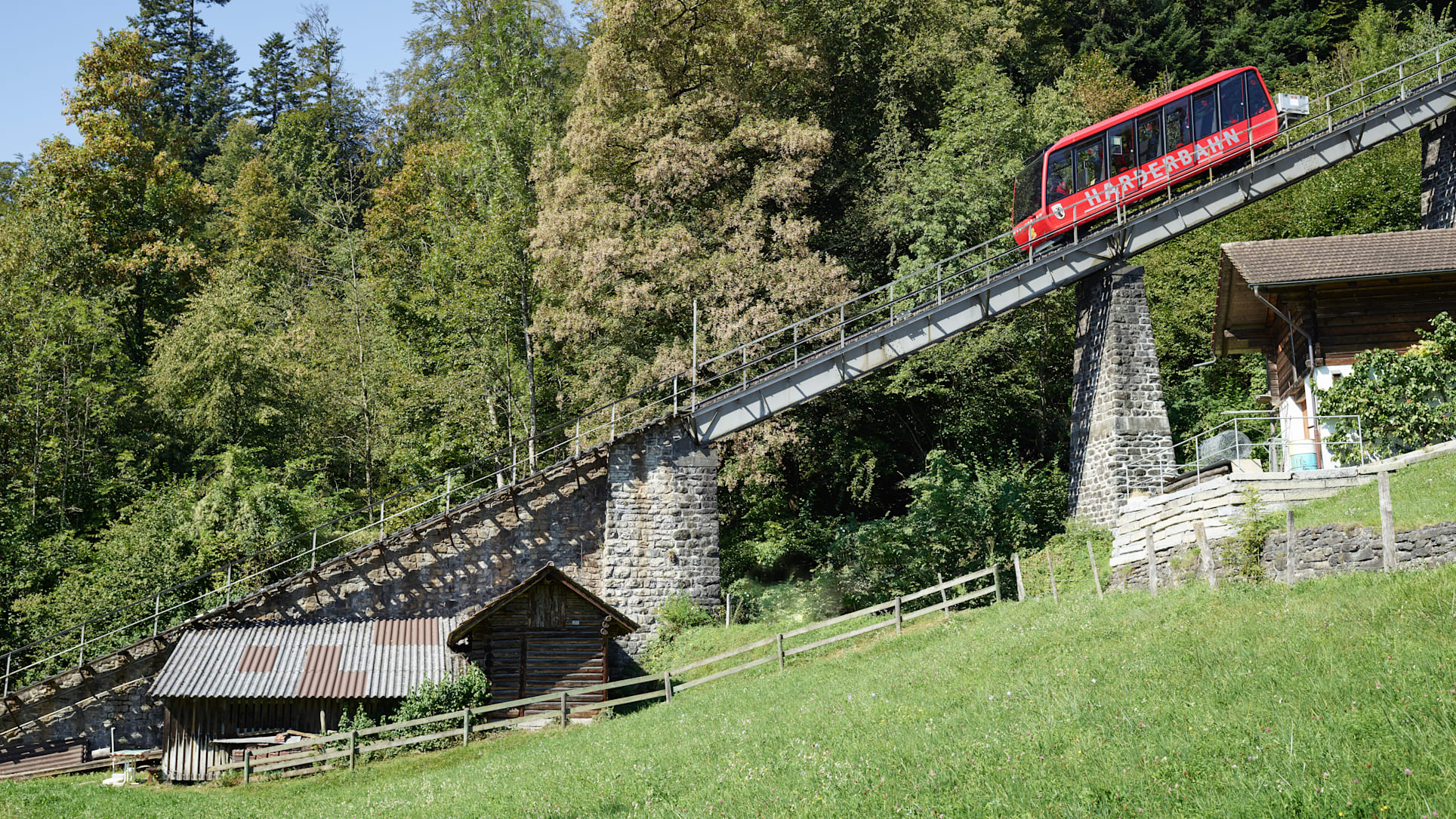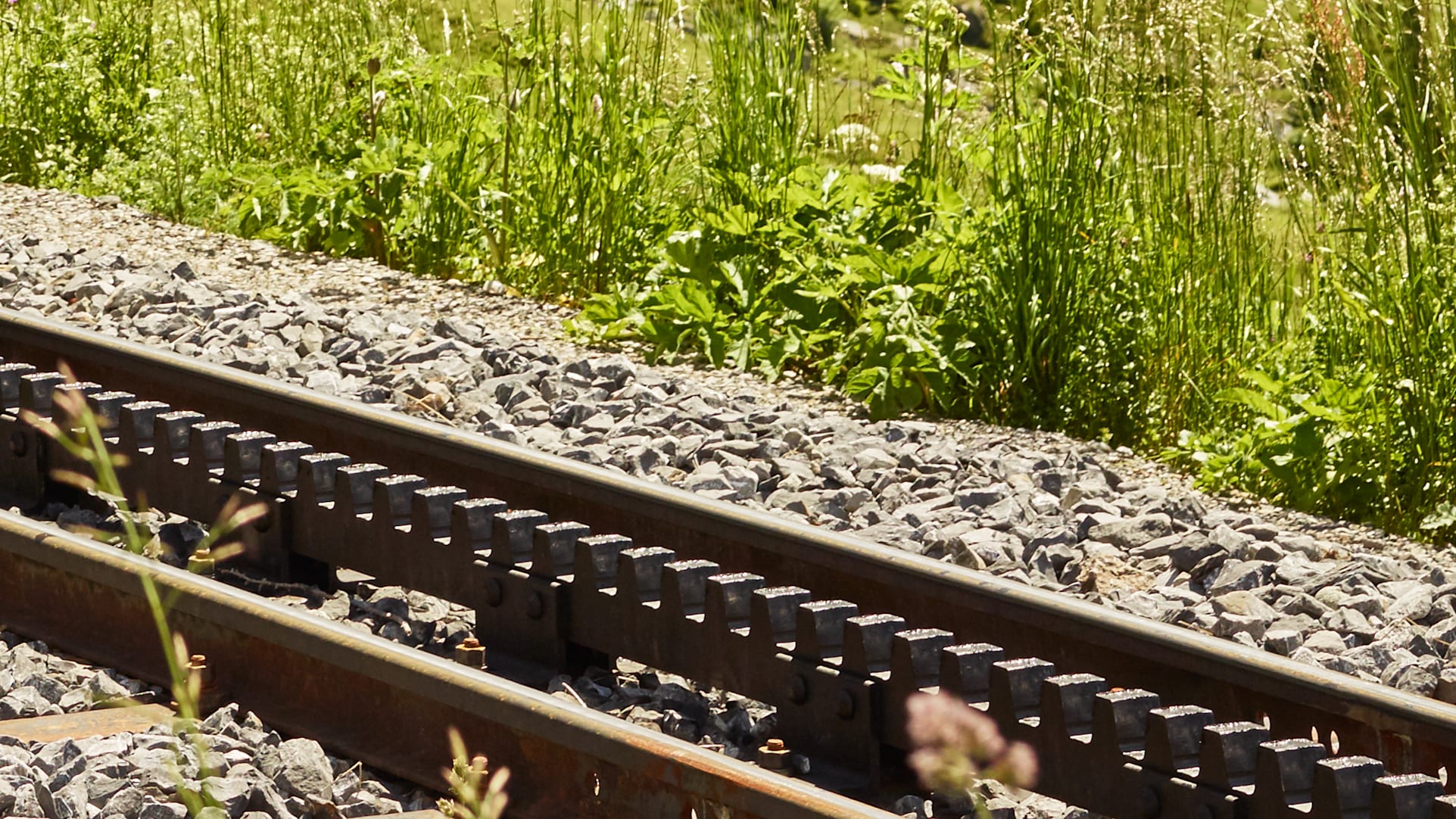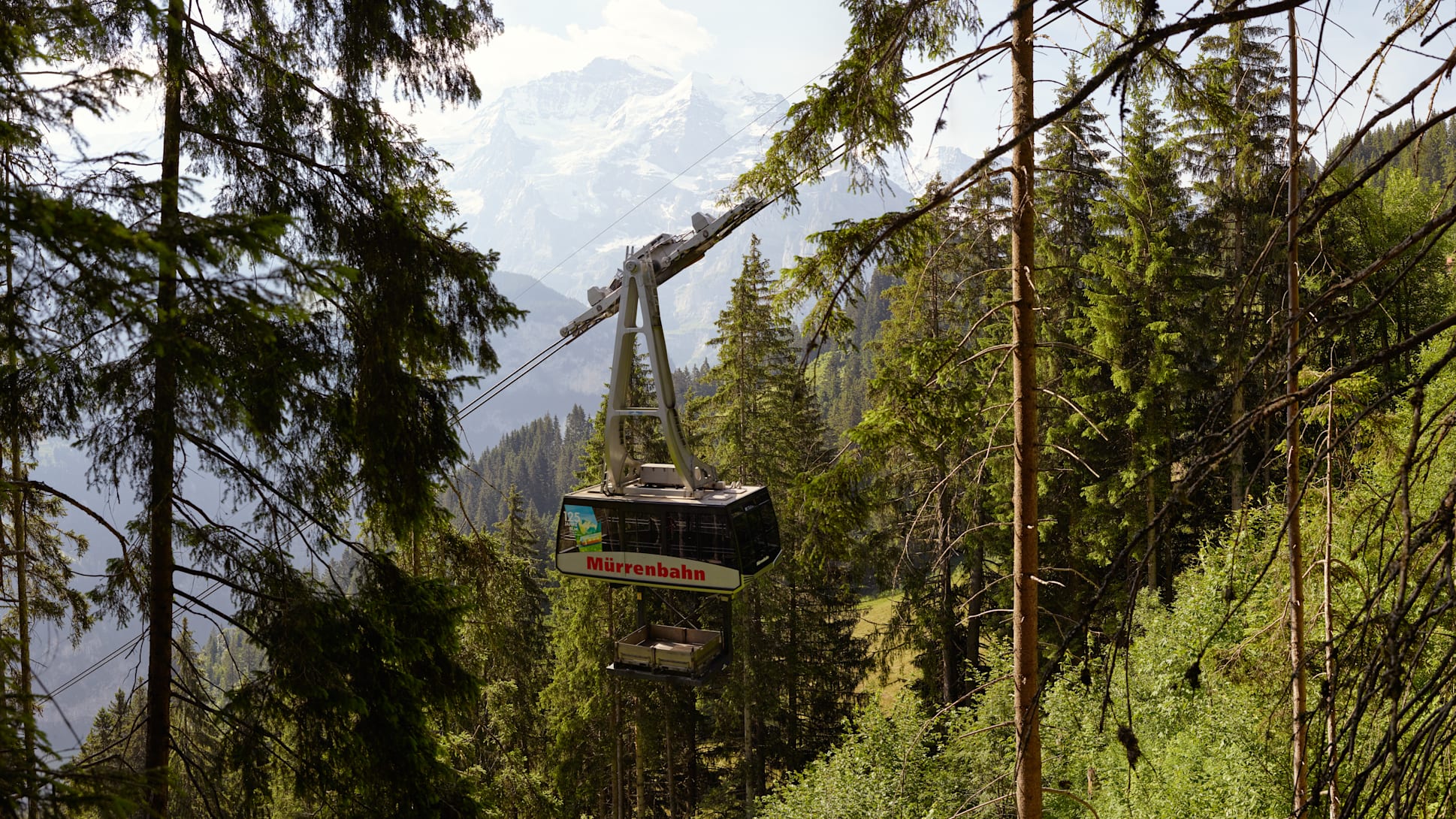Typology of the mountain railways (original) (raw)
Railways crossing all the mountains
They hover above canyons, traverse tunnels and overcome high altitudes: various types of trains make the Jungfrau Region an experience. Here is the most beautiful example of every type.
Cableways are one of the most energy-efficient mountain railways: two cars on rails are connected via a cable and keep each other in balance. In order to get them going, all that is needed is just enough energy to get them out of balance. Water was originally used for this purpose. With the water ballast railways, the descending car took up water and the ascending one let water out. However, because water ballasts were expensive to maintain, most were shut down or used electricity.

Eiger, Mönch and Jungfrau emerge
The founders of the funicular, inaugurated in 1908, to the Harder Observatory, used electricity from the very beginning. And they took the landscape into consideration: The 1,447 metre long track of the Harderbahn does not lead straight into Harder Kulm; instead, it traces an arc. From the valley, the track that is inclined up to 64 per cent is therefore hardly visible. All the more impressive is the view through the glass roof of the panorama cars: At first, only the peaks of the Eiger, Mönch and Jungfrau are visible, but the peaks "grow" with each of the 755 metres that are passed.

Rack railways: gear by gear, mountain by mountain
On the mountain by rail? In the mid 18th century, it seemed hopeless. The wheels adhered badly to the rails when it became steep. But then the Swiss engineer Niklaus Riggenbach developed a system enabling trains to climb. He received the patent for his rack system in 1863. He placed a rack between the rails, so that a gear wheel could reach the spaces between the crossbars.
There are several railways in the Jungfrau Region with the Riggenbach system, for example the Wengernalp Railway. It is the world's longest purely cogwheel railway at 19.1 kilometres, and it has connected Grindelwald, Lauterbrunnen and Wengen with Kleine Scheidegg since 1893. For a cogwheel railway train, it is quite fast: The latest rail cars reach 28 km/h on the mountain route. Slightly slower downhill!

Strub System: a case for very steep slopes
Riggenbach's invention was quite pioneering, but it also had disadvantages. In very steep places, it is possible that the cars "overrode" and threatened to derail. Fortunately, Riggenbach's student Emil Strub found a solution. His toothed racks with milled teeth also cope with extreme slopes and adapt better to various curve radii.
That was the solution for the Jungfraubahn. Strub won Adolf Guyer-Zeller's competition for the construction and operation of the railway in 1896. Thanks to Strub, the first director of the Jungfraubahn, it climbs gradients of up to 250 per mille.

Aerial cableway: Floating heavyweights
The first passenger aerial cableway in Switzerland was built in Grindelwald. It was the brainchild of Cologne-based government architect Wilhelm Feldmann. However, his vision of opening up the Wetterhorn ended with the first section and the outbreak of war in 1914. Prior to this, it had carried up to 110 passengers per hour with two 16-seat cabins.
Almost one hundred years later, the region's newest regional aerial cableway was completed. It only takes four minutes to travel from Lauterbrunnen to Grütschalp and has enormous capacities. The cableway with one cabin can carry a hundred passengers, plus six tonnes of goods. It reaches a total weight of approximately 26 tonnes at full load.
